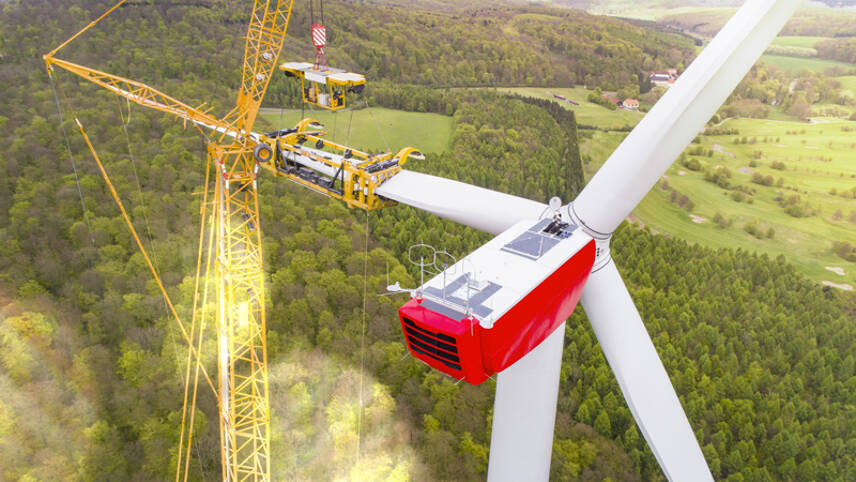Register for free and continue reading
Join our growing army of changemakers and get unlimited access to our premium content

That is a headline finding from a new analysis of energy investment requirements in the most popular and detailed net-zero scenarios, published today (6 October) by Bloomberg NEF (BNEF).
The publication assesses energy investment needs, on the supply side, in net-zero scenarios laid out by the International Energy Agency (IEA), the Network for Greening the Financial System and the UN-backed Intergovernmental Panel on Climate Change (IPCC). All scenarios entail reaching net-zero greenhouse gas emissions globally by 2050, with most being aligned with the Paris Agreement’s 1.5C temperature pathway.
In all scenarios, the ratio for investment in low-carbon energy supply to fossil fuel energy supply changes dramatically this decade. The ratio was 0.9:1 last year and 0.97:1 in 2020 but has never crossed 1:1.
This is set to change, the report states, with $815bn set to be spent on low-carbon energy supply in 2022, up from $718bn in 2020. While fossil fuel energy supply investment is also likely to increase in this timeframe, a 6.3% increase is expected, compared with a 17.7% increase for low-carbon energy.
BNEF is anticipating that the clean energy to fossil energy investment ratio this decade will need to be between 2.3:1 and 5.7:1 if the foundations are to be laid for the transition to net-zero by mid-century. The range in rations between the different scenarios then widens between 2030 and 2050, but the average is 6:1 for the 2030s and 10:1 for the 2040s.
Regarding investment in fossil fuel supply, BNEF sees the quickest and steepest decrease coming in the coal sector. From 2030 onwards, there should be no additional investment in new assets for power generation, it states. For oil supply, investment will need to fall from more than $5trn in the 2010s to around the $1trn mark in the 2040s. The decrease for gas investment within the same timeframe is less steep, from just under $4trn to just over $1trn.
The report emphasizes that changing investment patterns in energy supply alone will not be sufficient to deliver net-zero – there will also need to be increased investment in energy efficiency, electrification and fuel-switching from the demand side, along with investments in energy storage and grid upgrades. Energy efficiency, biomass liquids and end uses in the IEA’s scenario account for 41.7% of overall investment in the energy sector from 2021 to 2050.
Reclaim Finance’s senior analyst Paddy McCully has called the report “another clear indication that financial institutions need to rapidly redirect capital and financial services from fossil fuels to clean energy solutions”.
McCully said: “Ahead of COP27 and in the midst of a global energy crisis spurred by the world’s continued reliance on fossil fuels, banks, investors and insurers must do their part to accelerate the transition to clean, accessible and affordable energy.”
Peak fossil fuel demand?
In related news, energy think-tank Ember has published new analysis revealing that increased wind, solar and hydro-electric power generation was more than able to meet a global increase in electricity demand in the first half of 2022.
The six-month period saw electricity demand increasing globally by 3%. Wind and solar met 77% of this demand growth globally. Comp
However, the analysis also reveals that global coal-fired and gas-fired electricity generation increased in July and August. There are concerns that the power sector’s overall emissions will reach new highs in 2022.


The “renewables,” wind and solar, are inherently variable in ways that are beyond our control and thus not ideally suited to generation for the Grid.
To meet our baseload for electricity we could install four times our present nuclear generation, reserving gas for the variable, vital hour to hour demand.
Is the private ownership of the generation plant an insurmountable difficulty to such a scenario, or does HMG have powers to surmount these difficulties?
I have long seen the growth of this situation, and well remember the bitter winter of ’47. And then Harwell in ’54, the nuclear future. Ah me!
Richard Phillips